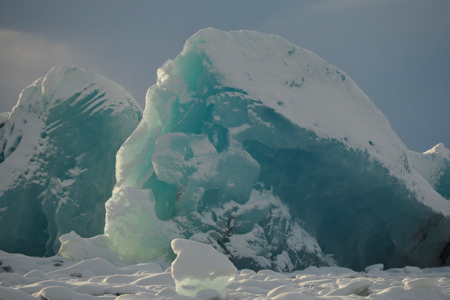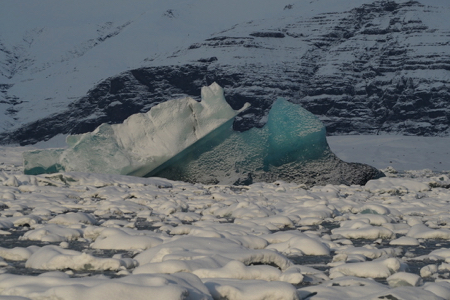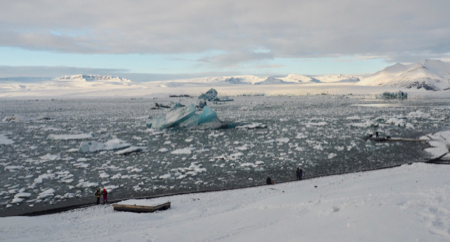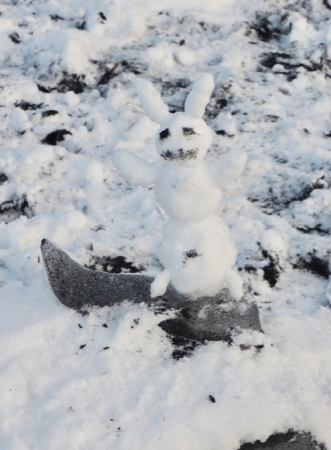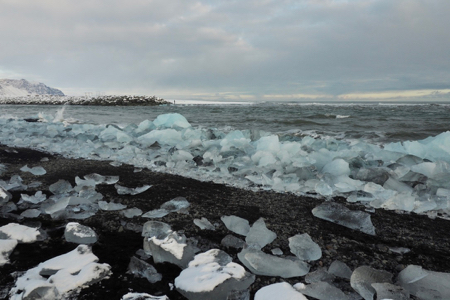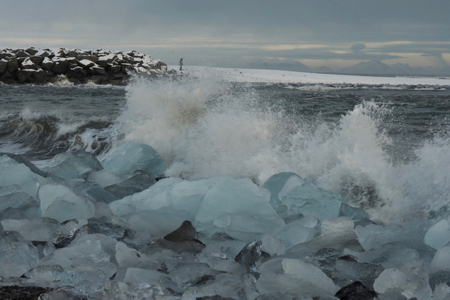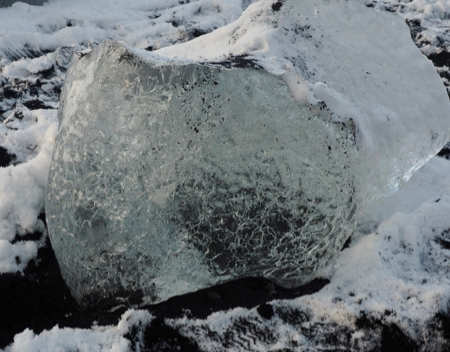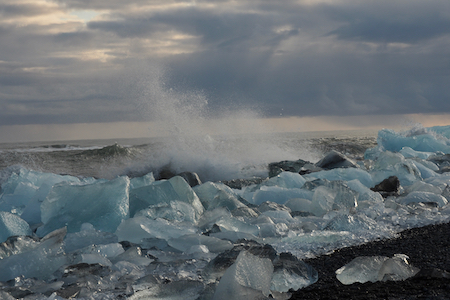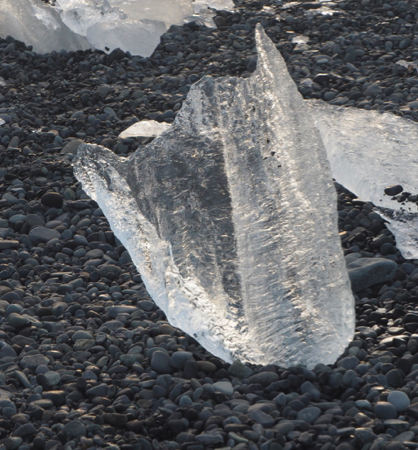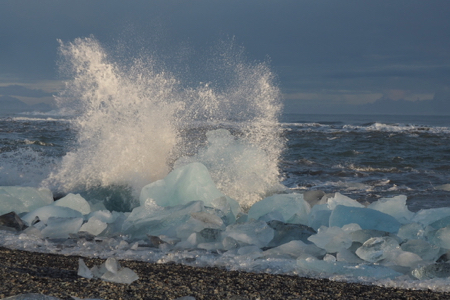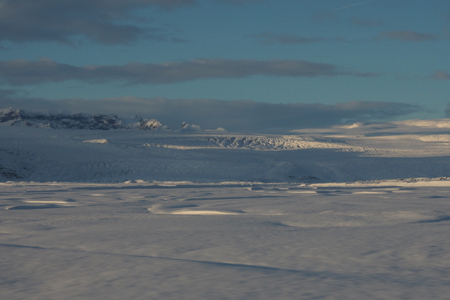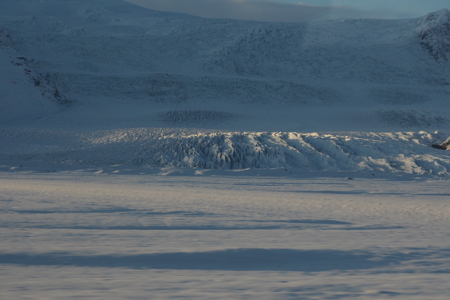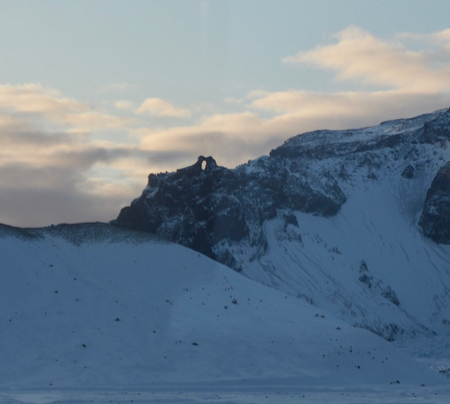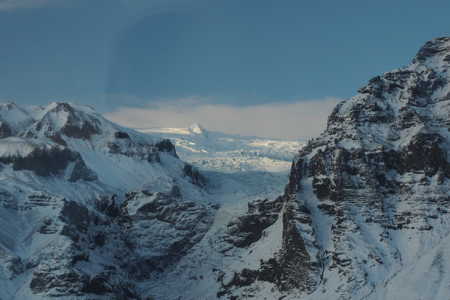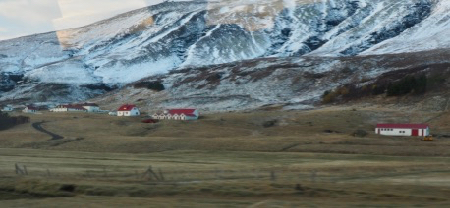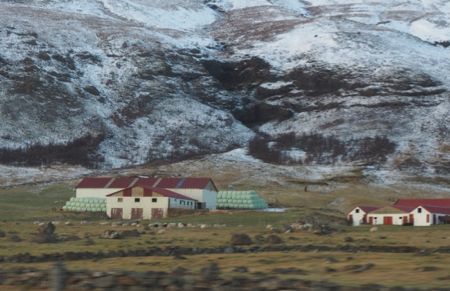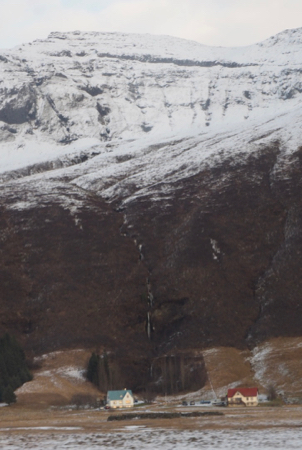Thurs., 11/7 - Skaftafell National Park and the Jokulsarlon Glacial Lagoon
This morning we drove east along the southern coast. The land soon changed from small farms to lava fields covered with snow. The largest glacier in SE Iceland (Vatnajökull) covers 3127 square miles - 8% of Iceland’s land mass - and has about 120 glacial outflows. The lava fields are flat out to the ocean which is miles away at some places. The volcanoes have left behind cliffs of octagonal basalt columns Some of the eruptions have spread ash to form tuff and others are strewn with rocks or just desolate sand. Many ships have run aground along this coast and sailors who made it to shore died trying to reach a survivable place beyond the glacier and wasteland. As an example, from 1830 to 1840 about 400 French sailors shipwrecked and died along here. There was nowhere to walk to.
There are many one-lane bridges across flood plains and glacier runoff streams. It would cost far too much to expand them to two lanes.
In 1996 two volcanoes under the Skaftafellsjokull glacier erupted, melted the glacial ice, and created a massive flood that wiped everything out. We stopped to look at two pieces of twisted metal that were part of a bridge that was destroyed by the flood. The poster boards showed the devastation.
Information boards - English is included
Bridge before the flood
Twisted remains
Twisted remains
Looking inland toward the glaciers
Looking toward the sea
Looks like winter!
At the visitor center for the Skaftafellsjokull glacier, we stopped, put on our ice crampons, and walked the path down to view the glacier’s terminus. The walk was very welcome after sitting on the bus. Cliffs on the left and a lava field with some small birch trees on the right added interest to the hike. The glacier was typical.
Hillside
Sun on the mountain tops (it is 10:30 am)
Mountains
Skaftafellsjokull glacier
Skaftafellsjokull glacier
Skaftafellsjokull glacier
Lunch was at the brand new Foss Hotel, Jokulsarlon, where we had a very nice buffet. The main entree was cod or chicken but included many good salads, pasta and rice, and desserts.
The afternoon was one of the highlights of the trip, a visit to the Jokulsarlon Glacial Lagoon. In the 1930s the Jokulsarlon glacier terminated in the Atlantic Ocean along the southern Iceland coast. It has now receded a mile or so and calves its ice into a lagoon. The ocean tides keep most of the ice in the lagoon. The lagoon is filled with brash, growlers, and small bergs. We walked along the shore of the lagoon taking pictures of the ice. The sun came out and some ice sparkled like diamonds, others showed deep blue facets. It was awesome!
Headland
Jokulsarlon glacier
Lagoon and distant mountains

Lagoon outflow to the sea
Lagoon filled with brash, growlers, and small bergs
"Diamond in the sun"
Piles of ice
Another "diamond"
Blue ice
Looking toward the glacier
After our walk along the shore of the lagoon, we moved to the lagoon outlet at the ocean. The waves on Diamond Beach were pushing growlers up to the beach and splashing over them. The black sand was littered with ice hunks. It was indescribable! This is the only glacier-ice filled lagoon, and ice cubed beach in Iceland.
Someone got creative
Ice and surf
Interesting shape
The drive back to the hotel produced more beautiful scenery, even when photographed through the windows of the bus.
A glacier's terminus
"Window on the world"
Hanging glacier
Farm houses and buildings
Barns and bales of hay
Waterfall
Iceland has a different take on climate change. Glaciers continue to recede and grow each year but over all they are receding more than growing. The ice melt reduces the salinity of the water and will eventually change the ocean environment for cod and other salt water fish. If the ocean becomes less salty, it will freeze in the ports and close shipping and fishing which are the lifeblood of Iceland. The island itself would eventually ice up. Not a happy future.
| Return to Top | Return to Itinerary | Return to Trips page to view other trips | Return to Dreamcatcher Home Page |
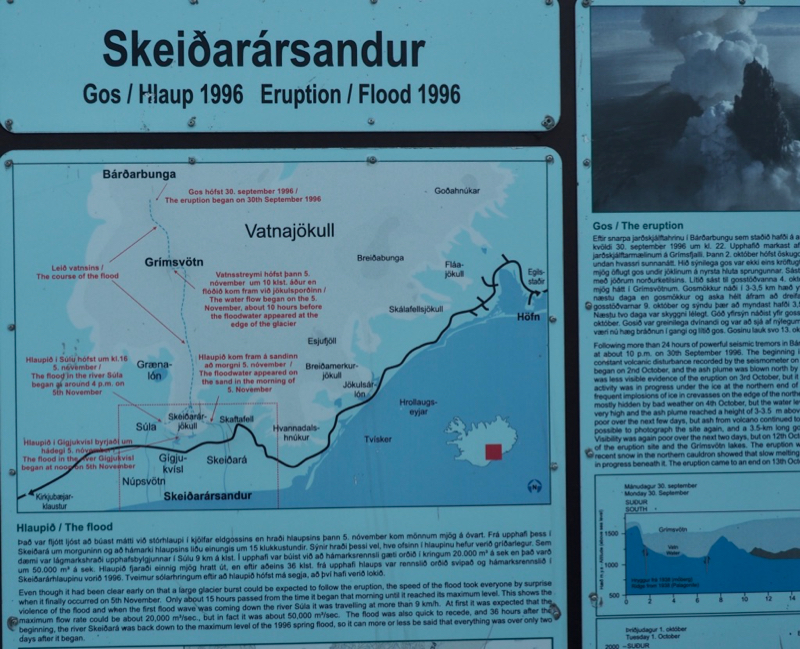
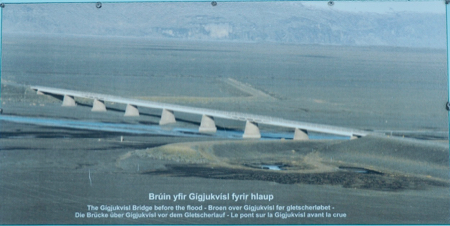
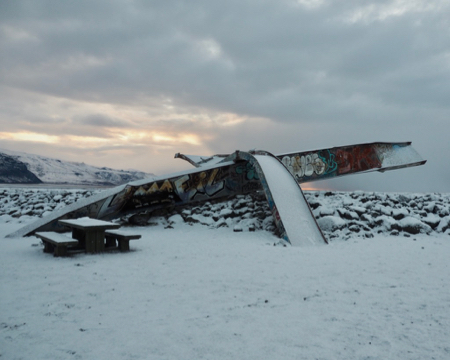


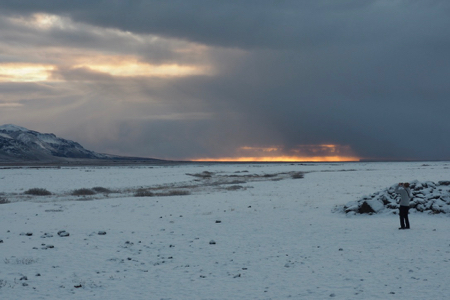

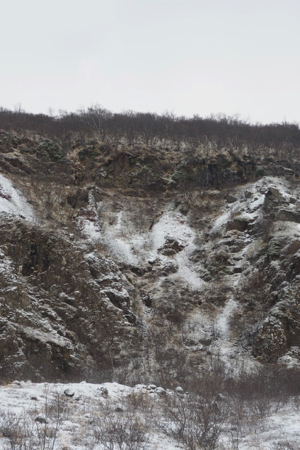

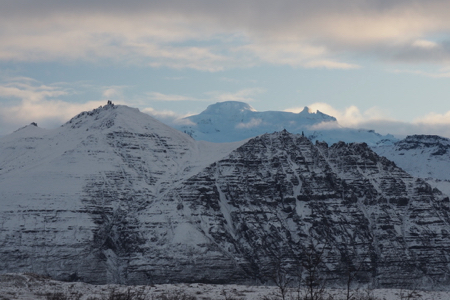
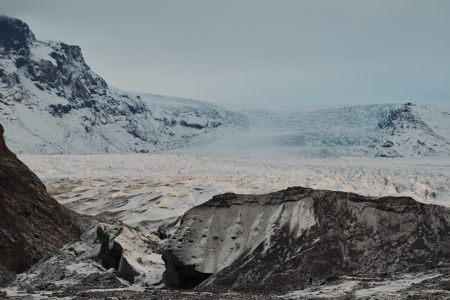
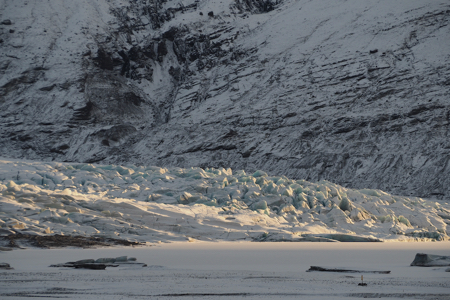

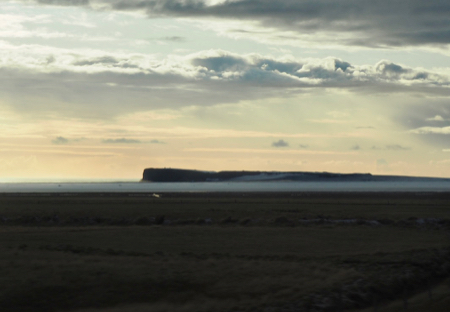
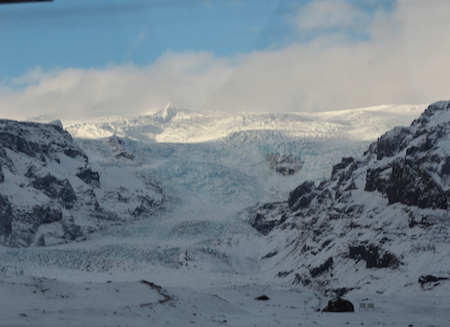
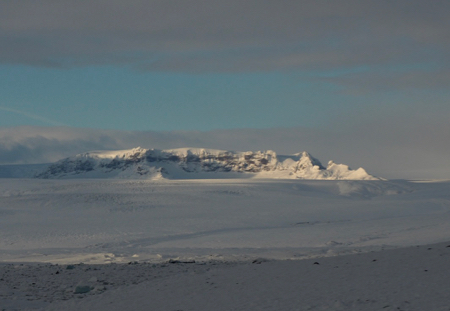

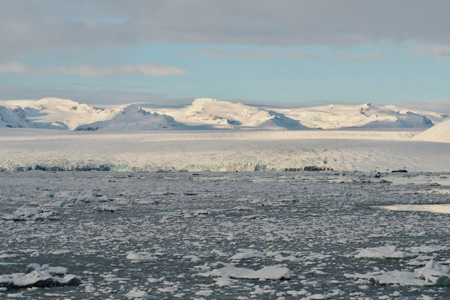

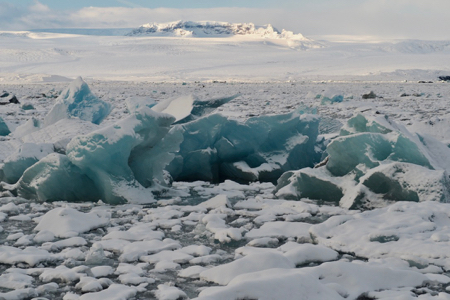
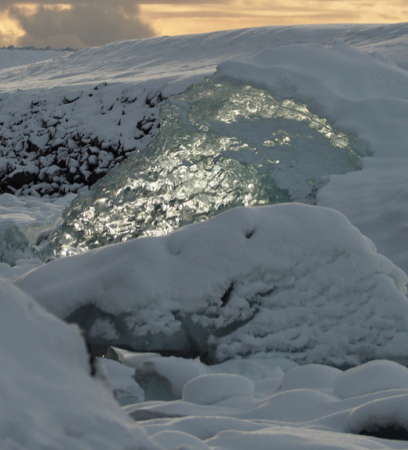
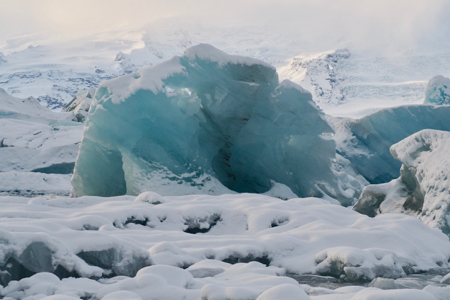
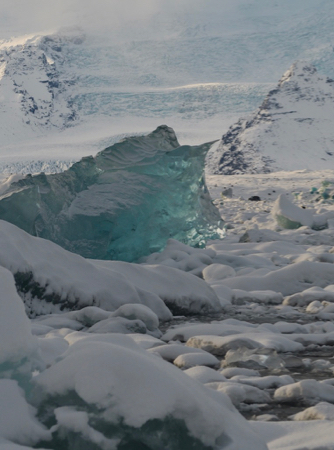
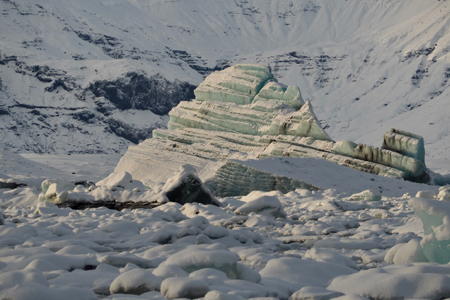
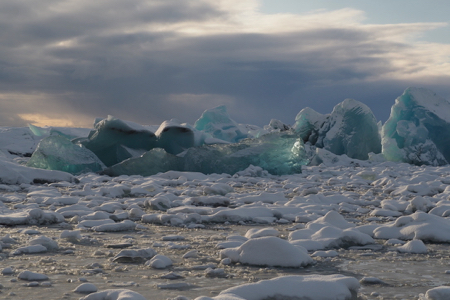
.jpg)
